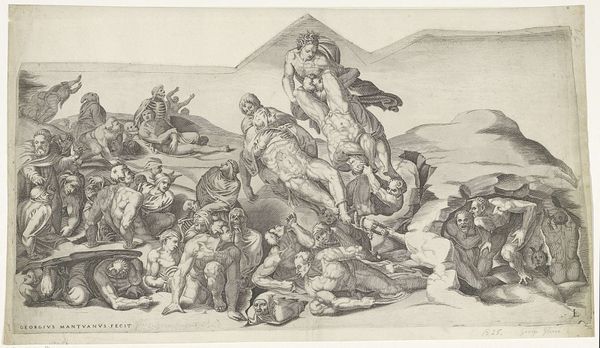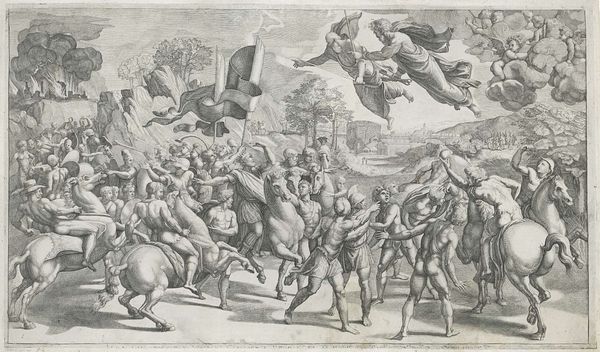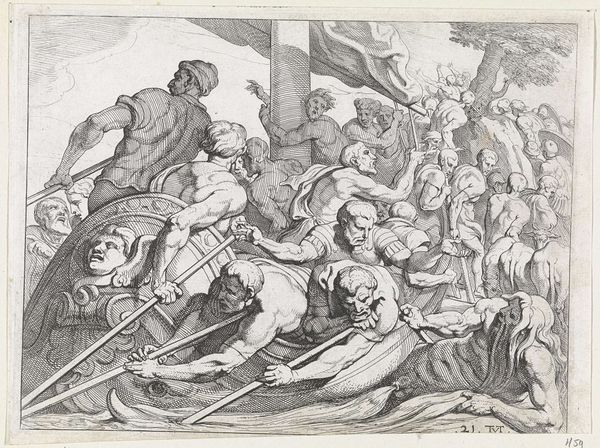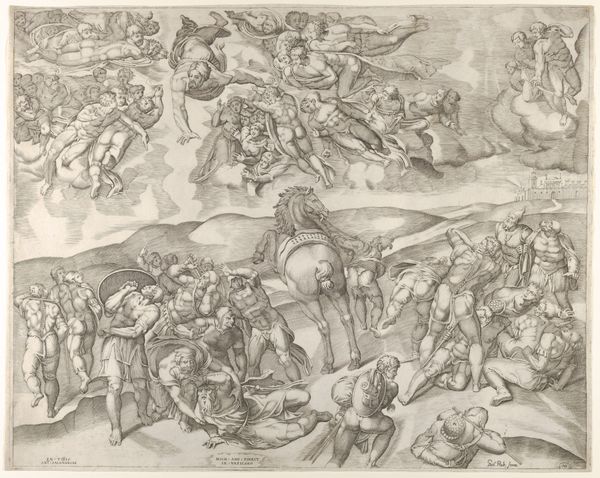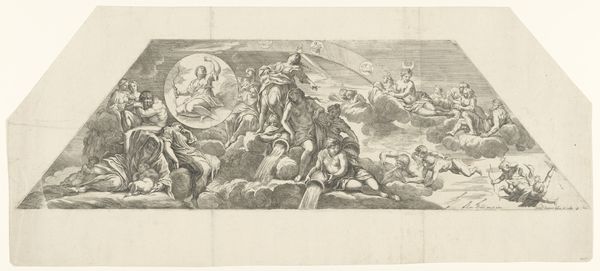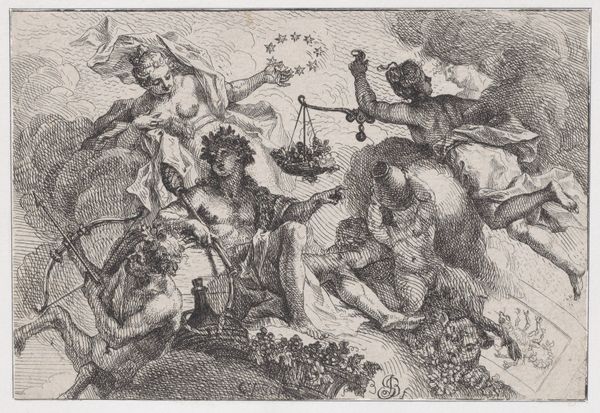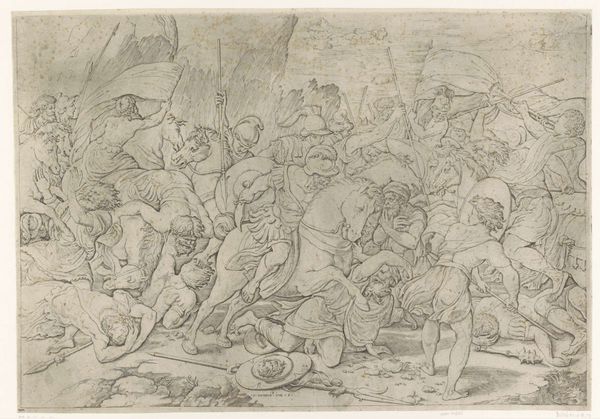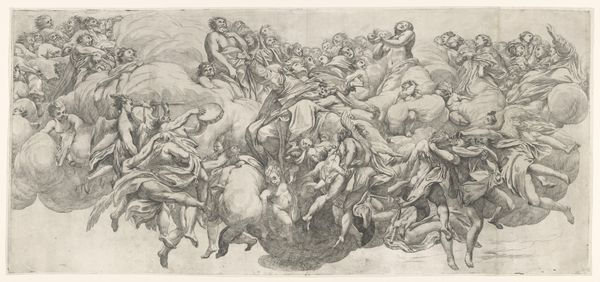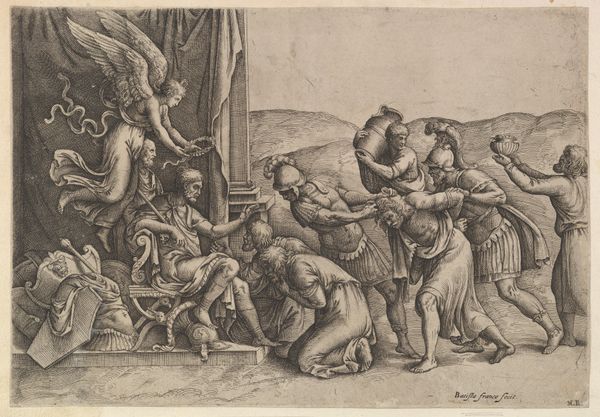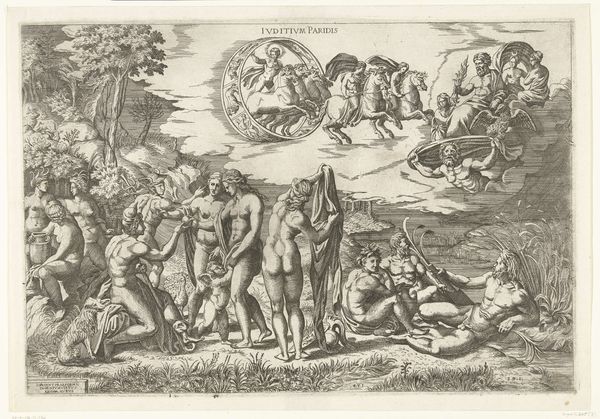
drawing, print, etching, engraving
#
drawing
# print
#
etching
#
mannerism
#
figuration
#
11_renaissance
#
pencil drawing
#
genre-painting
#
history-painting
#
italian-renaissance
#
engraving
Dimensions: height 406 mm, width 560 mm
Copyright: Rijks Museum: Open Domain
Editor: This is “The Last Judgement,” a 1548 etching by Nicolò della Casa after Michelangelo, currently held at the Rijksmuseum. It’s incredibly detailed, almost overwhelmingly so. The figures are so muscular and expressive. What stands out to you from a formal perspective? Curator: The compositional structure commands immediate attention. Note how the artist employs a dynamic, swirling arrangement of figures, eschewing a traditional linear perspective. The clusters create distinct zones, yet are interconnected through gestures and gazes, prompting the viewer's eye to traverse the entire scene. The contrasts in shading—the stark whites against deep blacks—heighten the drama. How does the use of line contribute to the overall sense of movement? Editor: Well, all the figures are outlined with strong, confident lines, which really emphasizes their individual forms. And I suppose that’s what gives it that sense of dramatic movement, everything feels so defined and separated, yet working towards that singular event. Do you think the medium of etching influenced the linear quality of this piece? Curator: Indeed. The etching process lends itself to precisely rendered lines, and the artist masterfully utilizes this attribute to delineate the muscular anatomy of the figures, their expressions, and the billowing draperies. The controlled use of hatching and cross-hatching creates gradations of tone, but also contributes to the textural complexity of the surface. Consider, for instance, the contrast between the smoothness of the skin and the ruggedness of the rocky terrain. How might that tension affect our perception of the subject matter? Editor: That’s interesting. I see what you mean now - those stark differences make it feel even more chaotic. It shows there is turmoil but then stillness or peace happening elsewhere. Curator: Precisely. It highlights the artist’s virtuosity in manipulating line and tone to achieve a visually arresting composition that transcends the mere depiction of a religious subject, engaging us on a purely formal level. Editor: I never really considered that before but looking at it like that, I’m not even sure that there is a clear hierarchy or obvious emotional center. That actually speaks more profoundly to its meaning than any story. Thank you for sharing your perspective, this gave me a lot to consider!
Comments
No comments
Be the first to comment and join the conversation on the ultimate creative platform.
